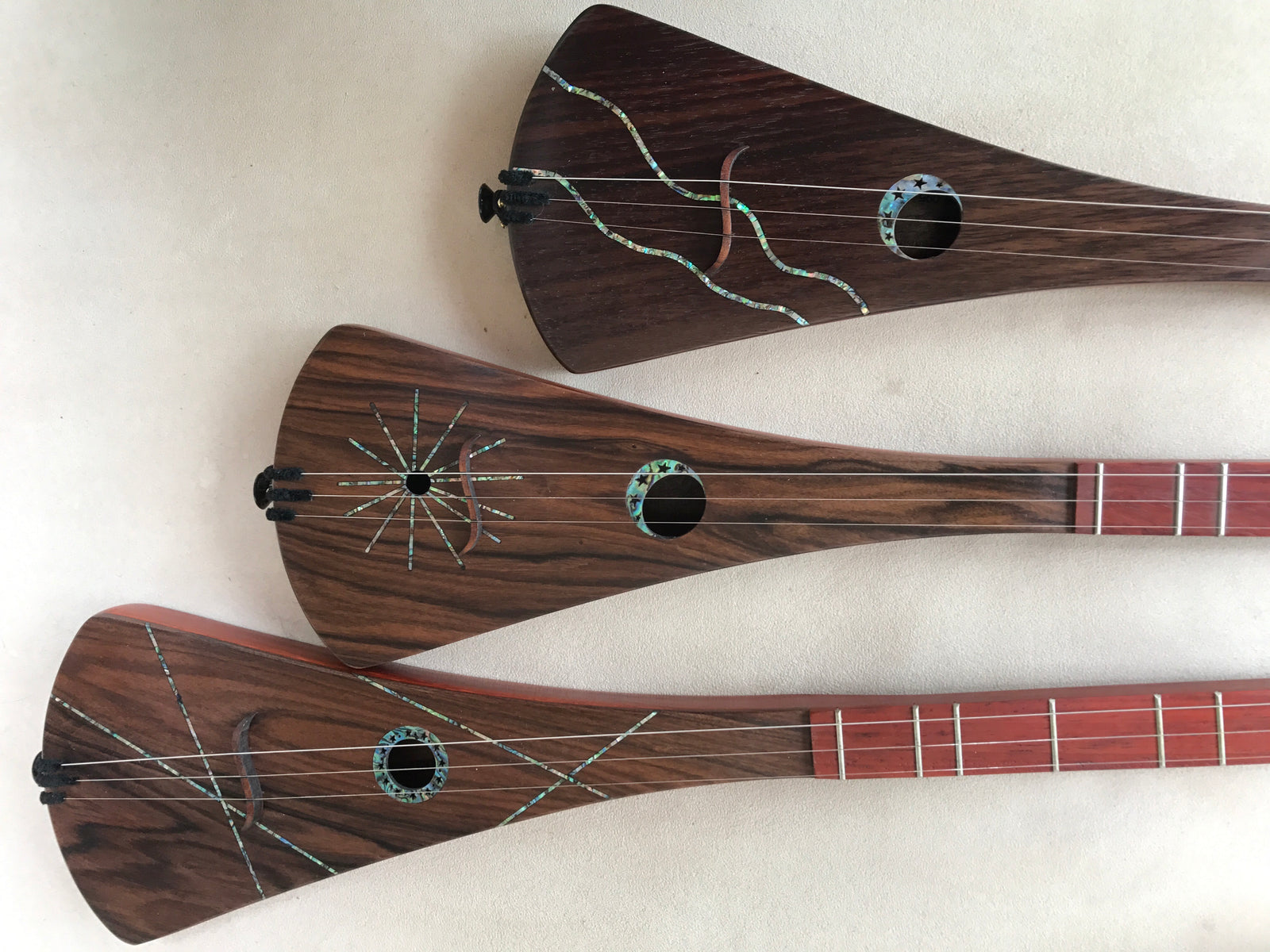The Neck and body of all our Strumsticks are red Padouk. You can decide which wood the top is made of: Spruce, Padouk, Rosewood or Koa. We use the different woods primarily for what they look like. We work the thicknesses of each wood differently to get the best tone from each wood, and they are all pretty similar. There are subtle sound differences, however the visual differences are much more dramatic.
Spruce is the standard soundboard (top) wood for many musical instruments: guitar, violin, piano, etc. Light and strong, it has a good balance of bass and treble, and good volume. The creamy white color of the Spruce creates a high color contrast with the red padouk of the Strumstick neck and sides. The Maple back (used for durability) combines with the Spruce to show a white/red/white stripe effect viewed from the side.
Padouk is the red wood we make the neck and sides out of, so a Padouk top and back Strumstick is all the same rich red color tone. There is essentially no color contrast between the top and the neck/body, so the unique shape of the Strumstick is emphasized. Padouk is very durable with its interlocked grain, and the tone is bright and clear; a little more treble and a touch less bass than Spruce. Padouk darkens with continued exposure to sunlight.
Rosewood (Indian Rosewood) is brown to dark-brown wood, with darker stripes. Used for the Strumstick top and back, it creates a handsome medium contrast between the dark top and the red padouk neck and body. The top and back create a subtle dark/red/dark stripe effect viewed from the side. The tone is similar to Padouk, clear and bright, strong treble, slightly reduced bass.
Koa is a beautiful golden tan to brown wood from Hawaii, often with lighter/darker grain and figure. It is prized for both its color and its tone. The golden undertone blends nicely with the red of the padouk, creating a subtle contrast between top and neck/body, and a subtle stripe viewed from the side. The tone of Koa is generally fuller than Spruce, with an ideal balance between treble and bass. In comparisons, we ( and customers) consistently hear more fullness, more "presence" from Koa compared to Spruce. It is a subtle difference but perceivable.
Keep in mind that wood is a natural material. No two trees are alike, and two Strumsticks of the same woods may look or sound differently. However the general characteristics of the several woods hold pretty true. The visual differences are more dramatic than the sound differences. We give a slight nod to Koa for best sound, along with our customers.



